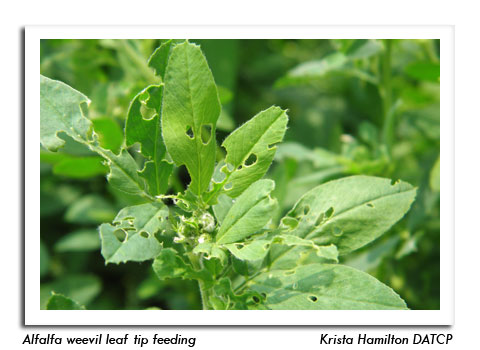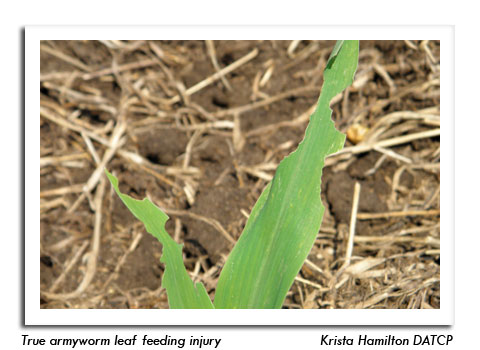
 |
|
|
Looking Ahead
Volume 58 Number 6 Date 06/06/2013 EUROPEAN CORN BORER - Moths are depositing eggs on vegetables and weed hosts at southern and central locations where 450 degree days (base 50°F) were recently surpassed. Snap beans, lima beans, peppers and potatoes are at increased risk of infestation since corn taller than 18 inches is not yet available. The spring flight may peak next week at advanced sites. ALFALFA WEEVIL - Larval populations have continued to build under the wet weather pattern of the past three weeks. Leaf tip damage is generally less than 30%, although a few scattered fields in Jefferson and Dodge counties are showing economic defoliation levels of 40-80%. As stated last week, populations are expected to increase significantly by mid-June and failure to harvest the first crop on time could result in severe damage by the larger and more destructive third- and fourth-instar larvae. Repeated monitoring is advised until the rain subsides and alfalfa harvesting can resume. TRUE ARMYWORM - Minor flights have been registered on warmer evenings for several weeks and moths continue to appear in low numbers in black light traps. Small grains, corn and other susceptible crops are under a low to moderate threat of larval infestation and should be monitored this month for developing problems. CORN EARWORM - Last week's active weather carried the first corn earworm migrants into southern Wisconsin. Three specimens were registered at Janesville on May 29 and another 69 moths arrived from May 30-June 5. Corn is not at a critical growth stage for corn earworm damage to occur, but host plants may serve as oviposition sites for migrating first generation moths. BLACK CUTWORM - Larvae from migrants that arrived last month are mostly in the second and third instars, but some have grown large enough to begin cutting corn seedlings. Growers and crop consultants should remain vigilant for signs of feeding injury during the next 2-3 weeks, or until corn has surpassed the V-4 stage. -- Krista Hamilton, DATCP Entomologist 





|
|
|